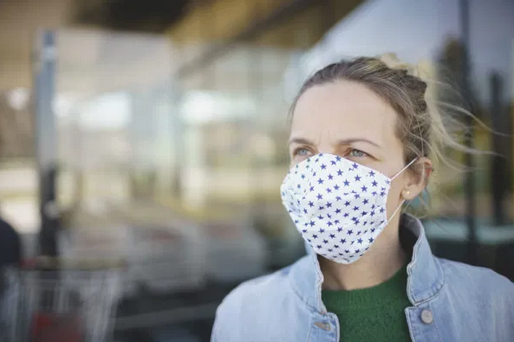Pfizer recently announced that its covid vaccine was more than 90 percent “effective” at preventing covid-19. Shortly after this announcement, Moderna announced that its covid vaccine was 94.5 percent “effective” at preventing covid-19. Unlike the flu vaccine, which is one shot, both covid vaccines require two shots given three to four weeks apart. Hidden toward the end of both announcements, were the definitions of “effective.” Both trials have a treatment group that received the vaccine and a control group that did not. All the trial subjects were covid negative prior to the start of the trial. The analysis for both trials was performed when a target number of “cases” were reached. “Cases” were defined by positive polymerase chain reaction (PCR) testing. There
Topics:
Gilbert Berdine, MD considers the following as important: 3.) Health, Featured, newsletter
This could be interesting, too:
Nachrichten Ticker - www.finanzen.ch writes Die Performance der Kryptowährungen in KW 9: Das hat sich bei Bitcoin, Ether & Co. getan
Nachrichten Ticker - www.finanzen.ch writes Wer verbirgt sich hinter der Ethereum-Technologie?
Martin Hartmann writes Eine Analyse nach den Lehren von Milton Friedman
Marc Chandler writes March 2025 Monthly
 Pfizer recently announced that its covid vaccine was more than 90 percent “effective” at preventing covid-19. Shortly after this announcement, Moderna announced that its covid vaccine was 94.5 percent “effective” at preventing covid-19. Unlike the flu vaccine, which is one shot, both covid vaccines require two shots given three to four weeks apart. Hidden toward the end of both announcements, were the definitions of “effective.”
Pfizer recently announced that its covid vaccine was more than 90 percent “effective” at preventing covid-19. Shortly after this announcement, Moderna announced that its covid vaccine was 94.5 percent “effective” at preventing covid-19. Unlike the flu vaccine, which is one shot, both covid vaccines require two shots given three to four weeks apart. Hidden toward the end of both announcements, were the definitions of “effective.”
Both trials have a treatment group that received the vaccine and a control group that did not. All the trial subjects were covid negative prior to the start of the trial. The analysis for both trials was performed when a target number of “cases” were reached. “Cases” were defined by positive polymerase chain reaction (PCR) testing. There was no information about the cycle number for the PCR tests. There was no information about whether the “cases” had symptoms or not. There was no information about hospitalizations or deaths. The Pfizer study had 43,538 participants and was analyzed after 164 cases. So, roughly 150 out 21,750 participants (less than 0.7 percent) became PCR positive in the control group and about one-tenth that number in the vaccine group became PCR positive. The Moderna trial had 30,000 participants. There were 95 “cases” in the 15,000 control participants (about 0.6 percent) and 5 “cases” in the 15,000 vaccine participants (about one-twentieth of 0.6 percent). The “efficacy” figures quoted in these announcements are odds ratios.
There is no evidence, yet, that the vaccine prevented any hospitalizations or any deaths. The Moderna announcement claimed that eleven cases in the control group were “severe” disease, but “severe” was not defined. If there were any hospitalizations or deaths in either group, the public has not been told. When the risks of an event are small, odds ratios can be misleading about absolute risk. A more meaningful measure of efficacy would be the number to vaccinate to prevent one hospitalization or one death. Those numbers are not available. An estimate of the number to treat from the Moderna trial to prevent a single “case” would be fifteen thousand vaccinations to prevent ninety “cases” or 167 vaccinations per “case” prevented which does not sound nearly as good as 94.5 percent effective. The publicists working for pharmaceutical companies are very smart people. If there were a reduction in mortality from these vaccines, that information would be in the first paragraph of the announcement.
There is no information about how long any protective benefit from the vaccine would persist. Antibody response following covid-19 appears to be short lived. Based on what we know, the covid vaccine may require two shots every three to six months to be protective. The more shots required, the greater the risk of side effects from sensitization to the vaccine.
There is no information about safety. None. Government agencies like the Centers for Disease Control (CDC) appear to have two completely different standards for attributing deaths to covid-19 and attributing side effects to covid vaccines. If these vaccines are approved, as they likely will be, the first group to be vaccinated will be the beta testers. I am employed by a university-based medical center that is a referral center for the West Texas region. My colleagues include resident physicians and faculty physicians who work with covid patients on a daily basis. I have asked a number of my colleagues whether they will be first in line for the new vaccine. I have yet to hear any of my colleagues respond affirmatively. The reasons for hesitancy are that the uncertainties about safety exceed what they perceive to be a small benefit. In other words, my colleagues would prefer to take their chances with covid rather than beta test the vaccine. Many of my colleagues want to see the safety data after a year of use before getting vaccinated; these colleagues are concerned about possible autoimmune side effects that may not appear for months after vaccination.
These announcements by Pfizer and Moderna are encouraging. I certainly hope that these vaccines protect people from the harm of covid-19. I certainly hope that these vaccines are safe. If both of these conditions are true, nobody will need to be coerced into taking the vaccine. However, you should pay even more attention about what is left out of an announcement than about what is stated. The pharmaceutical companies are more than happy for patients to misunderstand what is meant by efficacy. Caveat emptor (buyer beware)!
Tags: Featured,newsletter








